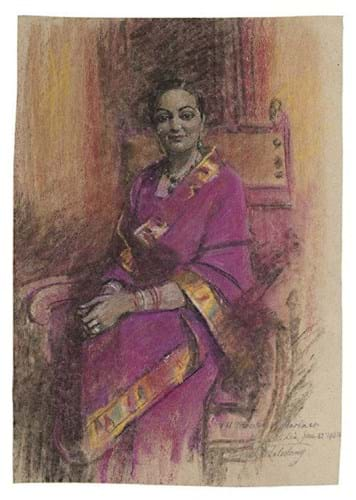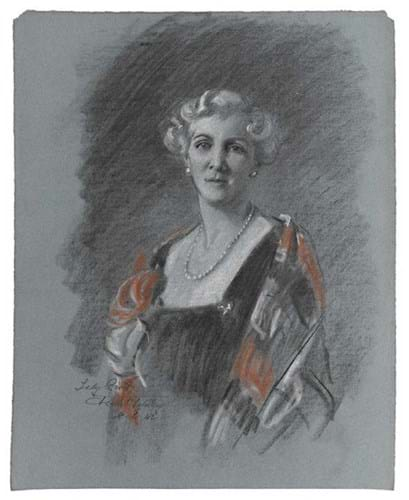
A chalk and pastel on paper of HH Princess Harriner, 1953, part of a lot of 10 portraits estimated at £400-600 at Roseberys.
A consignment of 200 works on paper (from a private collector via Philip Mould & Company) will be offered at Roseberys on November 29 in its Modern British & 20th century art sale.
Salisbury (1874-1962), born in Harpenden, Hertfordshire to a plumber and glazier father, attended Heatherley’s School of Art and won a scholarship to the Royal Academy Schools and eventually became a well-known portraitist of the rich and famous.
He painted 25 members of the royal family in the UK (the first to paint Queen Elizabeth II) and painted Winston Churchill on more occasions than any other artist.
He also made his name in the US and painted six presidents. His portrait of Franklin D Roosevelt remains as the official White House portrait.
The pictures coming for sale at Roseberys include a portrait of Will Keith Kellogg, founder of the cereal company and Her Highness the Ameera of Bhahwalpur. There is also a study of a nurse in wartime uniform as well as large-scale studies for religious scenes.
The 200 works on paper are being sold in collections of 10 portraits in each lot with groups of religious scenes across two lots.
Lowell Libson of dealership Lowell Libson & Jonny Yarker and a member and donor to the Walpole Society, said: “The portrait studies being sold at Roseberys constitute a remarkable treasury of notable sitters from the 1920s to the 1960s. For much of this period Frank Salisbury was the ‘go to’ portraitist who worked both accurately and fairly as well as rapidly and there was almost no one of note he didn’t paint.
“He was also known for his large-scale canvases of historical events and it is hugely appropriate that the Walpole Society which celebrates Horace Walpole’s overriding per sonal interest in antiquarianism and portraiture should benef it from this generous and enlightened gift.”
Philip Mould said: “I’ve always admired the Walpole Society and what it represents, so I was delighted to be able to assist with the donation of the Frank Salisbury drawings. Institutions like the Walpole Society must be supported.”
The Walpole Society was formed in 1911 to promote the study of British art and its history and each year it publishes an annual volume that contains new research in various fields of study.















